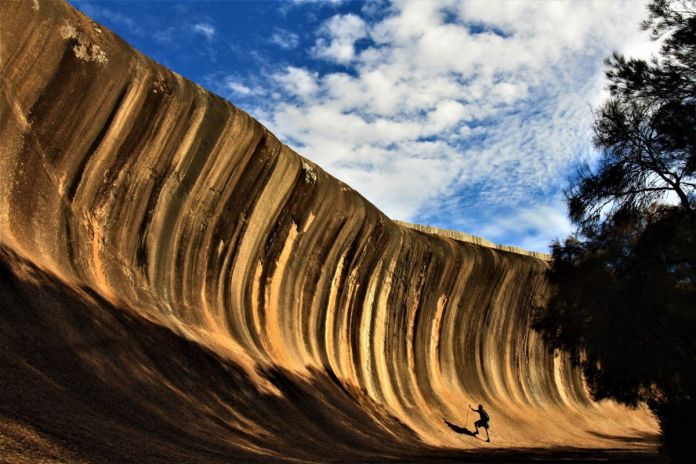There’s no denying that our mother Earth is full of amazing natural formations all across the world. And probably Australia is the most well endowed in this regard. Endless stretches of sand beach, bizarre rock formations, fields of wildflowers, and more, the country is a treasure trove for nature lovers. Well, with some digging, we found that there is a rock formation there that is formed naturally in the shape of a frozen wave. The ‘Wave Rock’ is about 50 feet high and around 360 feet long. Scroll down to know more about this remarkable natural creation.
About Wave Rock
Located East of the small town of Hyden in Western Australia, the Wave Rock is also known as Hyden Rock is about 49-50 feet high and approximately 360 feet long. Well, the geological marvel looks as if the tide was frozen still! With around 100,000 visitors annually the Wave Rock is a comparatively unspoilt natural wonder in Australia’s South West area. The rock gives you a cultural insight into the legends and a slice of ancient Australia.

Image Source: Wikipedia 
Image Source: Reddit
The rock surface has brown, grey and yellow stripes, which are caused by the growth of mineral deposits of carbonates and iron hydroxide washed by the rain. Also, these colours change during the day when the sun shines bright on this rock and gives it a gorgeous, bright glow.
Origin of The Wave Rock
It is believed that some parts of the rocks are 2.63 billion years old and are of cultural importance to the people. As per the beliefs of the locals, the unusual shape of stone was formed by the Rainbow Serpent as he dragged his body over the mother Earth after he consumed water that was on the entire land.

Hyden or Wave rock is a granite inselberg (isolated rock hill) consisting of three domes. The western and central domes are separated by a deep valley that is now transformed into a reservoir. Besides, the east and central domes are linked by a low platform. The foremost step in the development of the rock was the subsurface (earth material) alteration by weathering of granite bedrock beneath a land surface during the Cretaceous Period (100–130 million years ago). The granite bedrock underlying this surface was altered to multiple depths beneath the land surface though this process underground ‘domes’ of solid granite bedrock were formed.
Setting A Perfect Example

Many geomorphologists consider Wave Rock as a spectacular example of ‘flared slope’. A flared slope is a concave-inward or upward bedrock surface that is found around the base of granitic boulders. Flared slopes like this are well developed in granitic landforms of southern and south-western Australia.
Natural formations like these look absolutely gorgeous and we are sure you are also thrilled to know about this unique formation!
(Featured Image Source: Travel Tramp)




